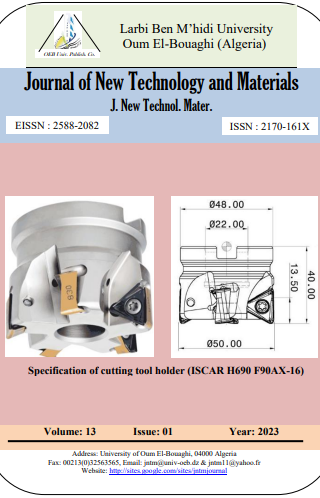Influence of sol concentration on FTO nanopowders synthesized by co-precipitation method for solar cell applications
Keywords:
: fluorine-doped tin dioxide, co-precipitation, Nano powder, sol concentrationAbstract
In the current research, Fluorine-doped tin oxide (FTO) nano-powders have been synthesized by the co-precipitation method. Stannous chloride pentahydrate, ammonium fluoride was used to synthesize FTO nano-powder, followed by calcination at 600 °C. The results showed that when the solution concentration value increased from 0.2 M to 1 M, the average crystallite size and particle size increased from 8 nm to 30 nm and 25 nm to 70 nm. By increasing sol concentration from 0.2 M to 1M, transmittance decreased. The bonding energy for fluorine is 684.7 eV Which corresponds to the peak of fluorine substitution in tin dioxide. The sample 0.2 M sol concentration would be a good candidate to achieve a high density and conductivity sputtering target.





